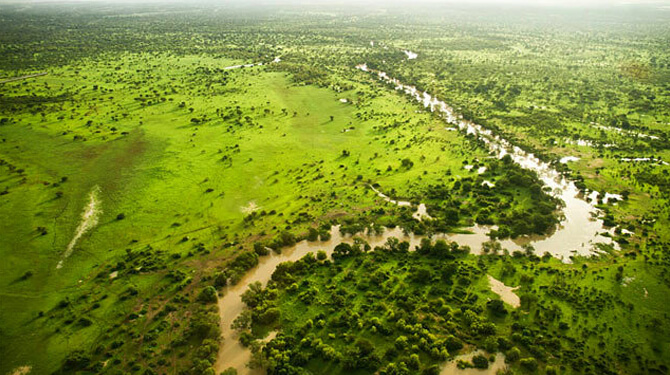India, facing the dual threats of climate change and land degradation, has launched a visionary project known as the Aravalli Green Wall Project. Inspired by Africa’s Great Green Wall, this initiative aims to transform the degraded stretches of the Aravalli hills into a thriving green belt—restoring nature, saving livelihoods, and slowing the march of the Thar Desert.
What is the Aravalli Green Wall Project?
Launched in 2023, the Aravalli Green Wall Project is an ambitious environmental initiative by the Government of India. Inspired by Africa’s Great Green Wall, it aims to develop a 1,400 km long and 5 km wide green strip along the Aravalli Hills, across Haryana, Rajasthan, Delhi, and Gujarat.

This project is designed to counteract the increasing problem of desertification, especially due to the eastward expansion of the Thar Desert.
Objectives of the Aravalli Green Wall Project
The key goals of the Aravalli Green Wall Project include:
- Combating desertification and land degradation
- Restoring over 2.3 million hectares of forest land
- Rejuvenating water bodies across semi-arid regions
- Promoting biodiversity through native plantations
- Providing sustainable livelihood options to local communities
- Contributing to carbon sink goals under the Paris Agreement
Why the Aravalli Hills Matter
The Aravalli Hills are one of the oldest mountain ranges in the world and form a crucial ecological barrier against the spread of the Thar Desert.

Over the years, these hills have suffered from deforestation, mining, and encroachments. The Aravalli Green Wall Project seeks to revive the ecological balance of this vital region.
States Involved in the Aravalli Green Wall Project
Haryana
- Focus on Gurgaon, Rewari, Mahendragarh, Bhiwani
- 35,000 hectares of land to be restored
- 75+ water bodies targeted for rejuvenation
Rajasthan
- Restoration of desert-affected zones
- Tree plantation using native species like khejri and ber
Delhi
- Creation of green buffer zones
- Pollution control and soil conservation measures
Gujarat
- Eco-restoration in drought-prone districts
- Agroforestry initiatives to benefit farmers
Challenges in Implementing the Aravalli Green Wall Project
Despite its noble goals, the Aravalli Green Wall Project faces serious hurdles:
- Illegal construction and mining
- Lack of community awareness
- Funding gaps and bureaucratic delays
- Climate challenges like erratic rainfall
Aravalli Green Wall Project: A Climate Resilience Model
The Aravalli Green Wall Project is more than just an afforestation drive—it is a symbol of India’s commitment to environmental sustainability. By involving local communities, state governments, and civil society, the project is creating a long-term ecological impact.
Conclusion
The Aravalli Green Wall Project stands as a beacon of hope for environmental revival in India. If implemented effectively, it can reverse decades of ecological damage, improve air and water quality, and become a global model for landscape restoration.



